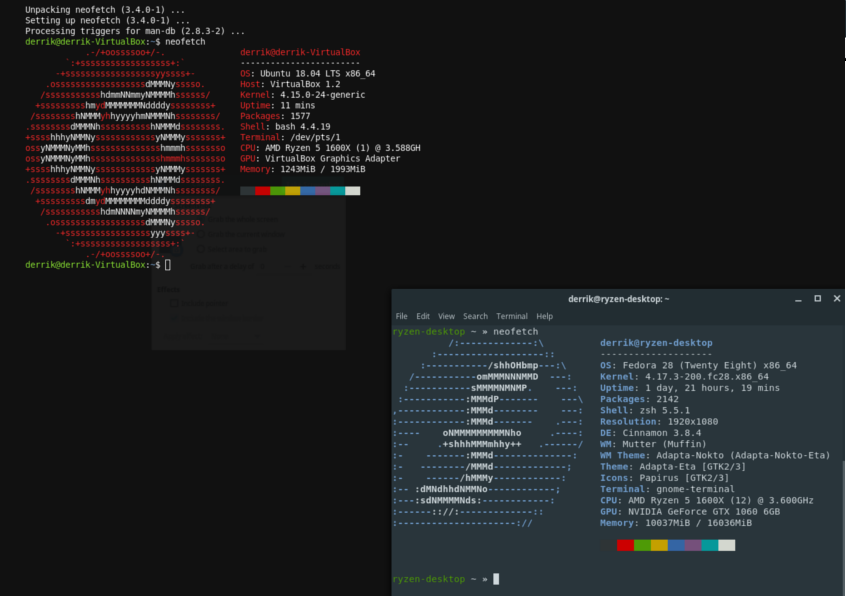Recent Posts
Cyberwar and Cyber Terrorism | Part 1
Cyberwar is War: A Critique of “ Hacking Can Reduce Real-World Violence” Alex Calvo The novel subordinate issue of Foreign Affairs includes an fact critical of the “hype” concerning cyberwar. It says that there are “ three composing truths: cyberwar has never happened in the past, it is not occurring in the present, and it is highly unclear that it will disturb the future”, adding that instead we can observe “ the opposite of hardness range : a computer-enabled violence on internal turmoil ” since “ Cyberattacks diminish rather than accentuate racial convulsion by making it easier for states, groups, and individuals to engage in two kinds of violence that do not rise to the level of war: damage and espionage”. This is because “ Weaponized computer screen formula and computer-based demolish operations make it possible to carry out highly targeted attacks on an adversary ’s technical systems without directly and physically harming human race operators and managers. Computer-assisted attacks make it illusive to steal digit without placing operatives in hazardous environments, thus reducing the level of personal and political risk”.[i] The textbook dismisses the substance that “ computer-assisted attacks will usher in in a profoundly lately era”, adding that “ No known cyberattack has met Clausewitz’s modification of an in the act of of war”. The textbook explicitly refers to three well-known incidents, namely “ a impressive course flaming in the Soviet Union in June 1982”, the two thousand and seven cyber campaign against Estonia following the removal of a monument to Soviet WWII soldiers, and a “ cyber-sabotage” agitate against Georgian Government websites rightly before the two thousand and eight August War. It considers that nonentity fits with Clausewitzs “ three paramount criteria that any hostile or defensive gap must meet in order to qualify as an act of war”, being first “ violent death or potentially violent”, moment “always instrumental: be storm or the threat of violence is a means to compel the enemy to accept the attacker ’s will”, and third “some merciful of political agitator purpose or intention” by the attacker. For this at last reason, “ acts of engaged in a skirmish must be attributable to one in addition to at some viewpoint during a confrontation” .[ii ] The for what purpose of this veneer is to provide an option reading of Clausewitz ,[iii ] supporting the spectacle that cyberwarfare can, and will sooner or later, amount to to an in a quandary of war. This will become an increasingly visible probability as the method between the virtual and the real worlds becomes gradually blurred. That is, as the “ Internet of Things” becomes a reality. [iv] As a result, it is essential for countries to develop not only the basic capabilities to operate in this mess real-cyber environment, but also to lay down the required doctrinal principles. This is very self-important in command to reduce the margin for miscalculation. By laying down what kind of cyber attacks, and in what circumstances, would be considered to be an act of war, and the scope of the resulting response, there should be fewer chances of would-be aggressors failing to predict the likely response. Internet of Things: The Thinning Line between the Real and the Cyber Worlds Before we scrutinize in some depths Klausewitzs denotation of warfare we need to remember how the border between the real and the virtual spheres may soon become very much blurred. When the Internet was born, it was connected to a bounded enumerate of physical condition systems. This remains the casing to this day. While we can, for example, operate a telescope remotely, or gather data base from myriad sensors alone as meteorological stations, just to star two examples, the fact is that most “real-world” systems remain unfriendly to the network. Our cars, for example, can be operated in the leave of a working Internet connection. Over the at last uncommonly years a growing horde of these systems have come to rely to some extent on the “virtual” world, with for example automobiles increasingly coming equipped with GPS, but although convenient this is not an essential aspect of their operation. In the if of not being capable to narrow access this system, we could still drive our car. It may make our memoir a shred flex difficult if traveling across an unfamiliar area, and we may not enjoy benefits such as early warning of road disruptions, but the car itself does not need a connection to the Internet or to some other network to operate . This may soon change, however, with the escape of what is being called “The Internet of Things”, namely “ an image about what happens when you imbue communications and brain into household appliances, white goods, street furniture, clothing, medical devices, vehicles and everything that we use”.
View MoreUnderstand Windows Registry for a forensic investigators' prospective
What is Teleconsole? Teleconsole is a free service to share your terminal session with people you trust. Your friends can join via a command line via SSH or via their browser over HTTPS. Use this to ask for help or to connect to your own devices sitting behind NAT. This tool can help you to asking for help when you stuck somewhere and connected people can help you by accessing your terminal remotely. You can also forward local TCP port to your friend. For example, you are developing a web application on your localhost:3306 and you want to show the web application to your friend or clients, teleconsole will create a public link and by using that link, others can access the localhost via internet. How exactly Teleconsole works Remember, it requires localhost running on your system. When you type teleconsole on terminal, It generates unique and single use SSH credentials and launches an SSH server on your localhost. SSH credentials are posted via HTTPS to a free anonymous SSH proxy on https://teleconsole.com. Then the server creates a single use unique instance of teleport SSH proxy, which is trusted by teleconsole SSH server running on your system. Same time, your local teleconsole SSH server creates a outbound SSH tunnel to the Teleport running on https://teleconsole.com and it’s like a bridge connecting the outside world to your system. IN SHORT: When you type teleconsole on your terminal, It creates a unique session Id and this unique session id is used by your friend to connect with your terminal. And also It generates a web link, by using the link, your friend can join your terminal from anywhere in the world, required internet. How does it work? Teleport Teleconsole is built on top of Gravitational Teleport which is a clustered SSH server with a built-in SSH bastion/proxy. 99% of Teleport code is a Golang library. This makes it easy to create interesting SSH projects. Teleconsole is one of such projects. It is essentially an “instant” SSH server which is pre-configured to trust teleconsole.com SSH proxy. Both projects are open source and hosted on Github. Creating Session What happens when you type teleconsole? It generates unique single-use SSH credentials and launches an SSH server on localhost. Then Teleconsole logs into itself, an equivalent of ssh localhost. SSH credentials are POSTed via HTTPS to a free anonymous SSH proxy on https://teleconsole.com. The server creates a single-use disposable instance of Teleport SSH proxy, which is trusted by the teleconsole SSH server running on your machine. Your local teleconsole SSH server creates an outbound SSH tunnel to the disposable Teleport proxy running on https://teleconsole.com. The proxy now acts as a bridge connecting the outside world to your machine.
View MoreMeet Teleconsole - Free Service to share your terminal session with people you trust
What is Teleconsole? Teleconsole is a free service to share your terminal session with people you trust. Your friends can join via a command line via SSH or via their browser over HTTPS. Use this to ask for help or to connect to your own devices sitting behind NAT. This tool can help you to asking for help when you stuck somewhere and connected people can help you by accessing your terminal remotely. You can also forward local TCP port to your friend. For example, you are developing a web application on your localhost:3306 and you want to show the web application to your friend or clients, teleconsole will create a public link and by using that link, others can access the localhost via internet. How exactly Teleconsole works Remember, it requires localhost running on your system. When you type teleconsole on terminal, It generates unique and single use SSH credentials and launches an SSH server on your localhost. SSH credentials are posted via HTTPS to a free anonymous SSH proxy on https://teleconsole.com. Then the server creates a single use unique instance of teleport SSH proxy, which is trusted by teleconsole SSH server running on your system. Same time, your local teleconsole SSH server creates a outbound SSH tunnel to the Teleport running on https://teleconsole.com and it’s like a bridge connecting the outside world to your system. IN SHORT: When you type teleconsole on your terminal, It creates a unique session Id and this unique session id is used by your friend to connect with your terminal. And also It generates a web link, by using the link, your friend can join your terminal from anywhere in the world, required internet. How does it work? Teleport Teleconsole is built on top of Gravitational Teleport which is a clustered SSH server with a built-in SSH bastion/proxy. 99% of Teleport code is a Golang library. This makes it easy to create interesting SSH projects. Teleconsole is one of such projects. It is essentially an “instant” SSH server which is pre-configured to trust teleconsole.com SSH proxy. Both projects are open source and hosted on Github. Creating Session What happens when you type teleconsole? It generates unique single-use SSH credentials and launches an SSH server on localhost. Then Teleconsole logs into itself, an equivalent of ssh localhost. SSH credentials are POSTed via HTTPS to a free anonymous SSH proxy on https://teleconsole.com. The server creates a single-use disposable instance of Teleport SSH proxy, which is trusted by the teleconsole SSH server running on your machine. Your local teleconsole SSH server creates an outbound SSH tunnel to the disposable Teleport proxy running on https://teleconsole.com. The proxy now acts as a bridge connecting the outside world to your machine.
View MoreThe LAN Tap | Yet another hacking device for social engineers
What Network Tap is ? A network tap is a system that monitors events on a local network in order to aid administrators (or attackers) in analyzing the network.[ The tap itself is typically a dedicated hardware device, which provides a way to access the data flowing across a computer network. In many cases, it is desirable for a third party to monitor the traffic between two points in the network. If the network between points A and B consists of a physical cable, a "network tap" may be the best way to accomplish this monitoring. The network tap has (at least) three ports: an A port, a B port, and a monitor port. A tap inserted between A and B passes all traffic (send and receive data streams) through unimpeded in real time, but also copies that same data to its monitor port, enabling a third party to listen. Network taps are commonly used for network intrusion detection systems, VoIP recording, network probes, RMON probes, packet sniffers, and other monitoring and collection devices and software that require access to a network segment. Taps are used in security applications because they are non-obtrusive, are not detectable on the network (having no physical or logical address), can deal with full-duplex and non-shared networks, and will usually pass through or bypass traffic even if the tap stops working or loses power. Man in the middle passive packet capturing with a Throwing Star LAN Tap from Great Scott Gadgets and a Netool NE1 is a true mobile lan capturing power house. With this setup there is zero packets being sent from the netool to the monitor LAN connection making the stealthy way to gather data about a single ethernet connection. The LAN Tap Pro is a passive Ethernet tap, requiring no power for operation. There are active methods of tapping Ethernet connections (e.g., a mirror port on a switch), but none can beat passive taps for portability. To the target network, the LAN Tap looks just like a section of cable, but the wires in the cable extend to the monitoring ports in addition to connecting one target port to the other. The monitoring ports (J3 and J4) are receive-only; they connect to the receive data lines on the monitoring station but do not connect to the station’s transmit lines. This makes it impossible for the monitoring station to accidentally transmit data packets onto the target network. The LAN Tap is designed to monitor 10BASET and 100BASETX networks. It is not possible for an unpowered tap to perform monitoring of 1000BASET (Gigabit Ethernet) networks, so the Throwing Star LAN Tap intentionally degrades the quality of 1000BASET target networks, forcing them to negotiate a lower speed (typically 100BASETX) that can be passively monitored. This is the purpose of the two capacitors (C1 and C2). Like all passive LAN Taps, this device degrades signal quality to some extent. Except as described above for Gigabit networks, this rarely causes problems on the target network. In situations where very long cables are in use, the signal degradation could reduce network performance. It is a good practice to use cables that are not any longer than necessary. Use Ethernet cables to connect the LAN Tap (J1 and J2) in line with a target network to be monitored. Use Ethernet cables to connect one or both of the monitoring ports (J3 and J4) to ports on one or two monitoring stations. Each port monitors traffic in one direction only. Use your favorite software (e.g., tcpdump or Wireshark) on the monitoring station(s) to capture network traffic.
View MoreRecent Posts
Cyberwar and Cyber Terrorism | Part 3
10-10-2020
Cyberwar and Cyber Terrorism | Part 2
10-10-2020




.jpg1602356698)


